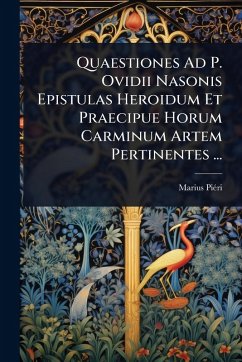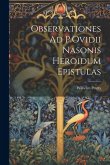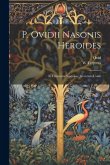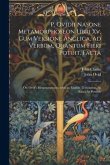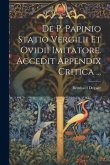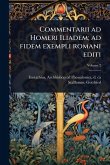Quaestiones Ad P. Ovidii Nasonis Epistulas Heroidum Et Praecipue Horum Carminum Artem Pertinentes is a Latin text by Marius PiÃ(c)ri, originally published in 1895. This work delves into a detailed analysis of Ovid's "Heroides," exploring the nuances of Ovid's poetic art within these epistolary poems. PiÃ(c)ri's study offers insights into the structure, style, and thematic elements of Ovid's work, providing valuable perspectives for classical scholars and students of Latin literature. The text examines specific questions related to the "Heroides," shedding light on Ovidâ(TM)s techniques and the historical context influencing his writing. It remains a significant resource for those seeking a deeper understanding of Ovidian poetics and the reception of classical texts. This edition preserves the original Latin, making it accessible to researchers and enthusiasts interested in classical literary criticism. This work has been selected by scholars as being culturally important, and is part of the knowledge base of civilization as we know it. This work was reproduced from the original artifact, and remains as true to the original work as possible. Therefore, you will see the original copyright references, library stamps (as most of these works have been housed in our most important libraries around the world), and other notations in the work. This work is in the public domain in the United States of America, and possibly other nations. Within the United States, you may freely copy and distribute this work, as no entity (individual or corporate) has a copyright on the body of the work. As a reproduction of a historical artifact, this work may contain missing or blurred pages, poor pictures, errant marks, etc. Scholars believe, and we concur, that this work is important enough to be preserved, reproduced, and made generally available to the public. We appreciate your support of the preservation process, and thank you for being an important part of keeping this knowledge alive and relevant.
Bitte wählen Sie Ihr Anliegen aus.
Rechnungen
Retourenschein anfordern
Bestellstatus
Storno

